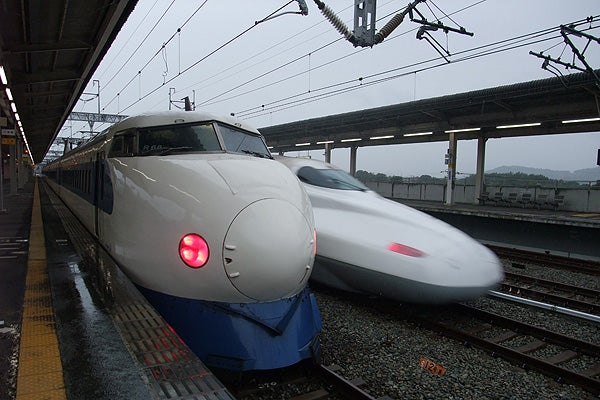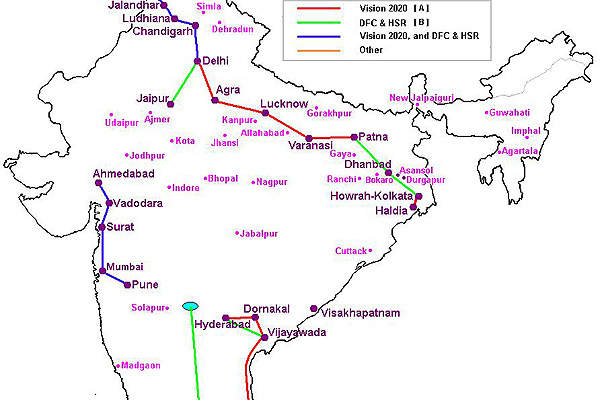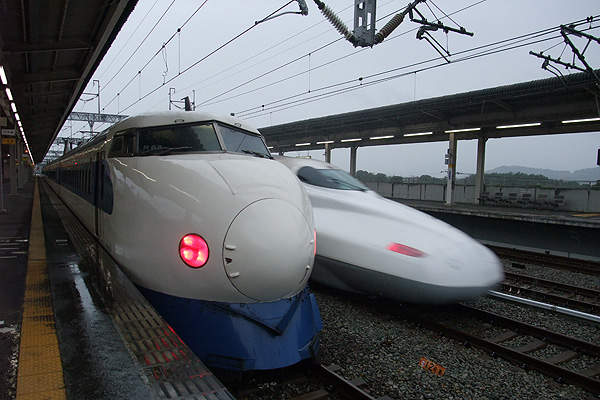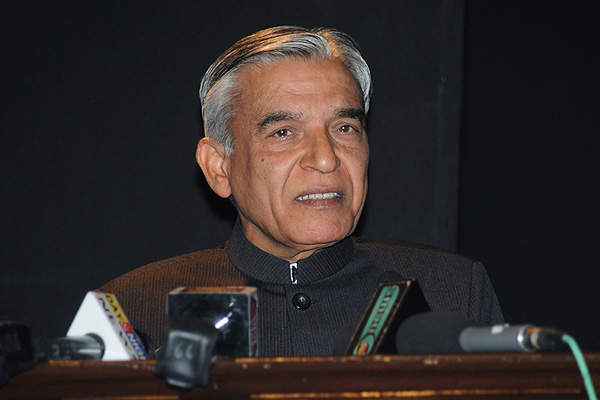
The 508km Mumbai-Ahmedabad high-speed link will be India’s maiden high-speed rail project. It is part of the 650km Pune-Mumbai-Ahmedabad line, one of the six high-speed corridors identified for implementation in the country.
The high-speed rail (HSR) linking Ahmedabad, Gujarat, with Maharashtra’s capital Mumbai is being advanced as a fast-track pilot project.
The high-speed line is expected to spearhead the bullet train services in other parts of India. Estimated to cost Rs1.1tn ($17.15bn), the project is being implemented by Rail Vikas Nigam and National High Speed Rail Corporation (NHSRC).
Ground was broken for the construction of the line on 14 September 2017 by India’s Prime Minister Narendra Modi and Japan’s Prime Minister Shinzo Abe.
The line will be built on an elevated corridor for most of its length (468km) along an existing route, barring a 27km section inside a tunnel (including a 7km section undersea) and 13km aboveground.
The project is expected to reduce the travel time between Mumbai and Ahmedabad to less than two hours compared to the current journey time of more than seven hours.
Line route and stations
The Mumbai-Ahmedabad high-speed rail will begin from Mumbai’s Bandra Kurla Complex and end near Sabarmati railway station in Gujarat, covering 12 stations in total.
The stations covered by the project include Mumbai, Thane, Virar, Boisar, Vapi, Bilimora, Surat, Bharuch, Vadodara, Anand/Nadia, Ahmedabad and Sabarmati. Two rail depots will be built, one each near Thane and Sabarmati Rail Depot.
Role of JICA in India’s first bullet train project
Japan International Cooperation Agency (JICA) and the Indian Ministry of Railway signed a memorandum of understanding (MoU) to study the feasibility of the corridor in October 2013. Rail Vikas Nigam subsidiary High Speed Rail Corporation (HSRC) was also associated with the feasibility study. The final feasibility report was submitted to Ministry of Railways in July 2015.
JICA further signed a memorandum for general consultancy with the Ministry of Railways, Government of India / HSRC, and a joint venture (JV) comprising Japan International Consultants for Transportation (JIC), NIPPON KOEI and Oriental Consultants Global, in December 2016.
The General Counsel is responsible to provide design and bidding assistance for the public works and systems associated with the project. JICA also agreed to cover the expenses related to the same.
Financing
Japan agreed to provide a soft loan of Rs880bn ($13.72bn) at an interest rate of 0.1% a year to be repaid within 50 years.
Contractors involved
The JIC, NIPPON KOEI and Oriental Consultants Global JV appointed India-based development advisory company Taru Leading Edge to prepare an Indigenous People Plan for the areas and people affected by the project.
Mumbai-Ahmedabad HSR project development history
The pre-feasibility study for the Pune-Mumbai-Ahmedabad HSR project was completed in December 2010 by French consulting firm Systra, along with Rail India Technical and Economic Service (RITES) and Italy’s ITALFER. It had projected approximately 26.6 million passengers using the high-speed line in 2021 and 104 million passengers in 2041.
The Pune-Mumbai section was dropped from the pilot phase implementation plan due to cost constraints. The Mumbai-Ahmedabad HSR was prioritised for development based on intercity traffic projections and relatively higher per capita income in Gujarat and Maharashtra states.
An MoU was signed between the Ministry of Railways, Government of India and the French National Railway (SNCF) in February 2013, under which both the parties agreed to jointly carry out ‘operations and development’ feasibility of the Mumbai-Ahmedabad HSR project. SNCF agreed to fund the study with support from the French Ministry of Finance.
Related project
Mumbai Metro, Maharashtra, India
Overstretched rail and road networks have created an urgent need for a suitable high-capacity transport system within the Indian city of Mumbai, formerly known as Bombay.
During the Indian Prime Minister’s visit to Japan in May 2013, the prime ministers of both countries decided to co-finance a detailed joint feasibility study for the Mumbai-Ahmedabad HSR. The JICA was given the go-ahead for the study in September 2013.
The detailed study examined the possibility of operating trains with a top speed of 350km/h, as well as the funding pattern, alignment, patronage, possible halts and fare structure.
Background to high-speed rail development in India
India boasts of one of the largest rail networks in the word with a total route length exceeding 64,000km and more than 7,000 railway stations. The country, however, does not have a high-speed rail line.
The need for introducing high-speed rail (bullet train services at speeds up to 300km/h or more) has been emphasised repeatedly in India.
The first proposal to launch high-speed line in India was mooted in the mid-1980s with the proposed high-speed link between Delhi and Kanpur via Agra. The project, however, did not take-off due to high cost implications.
Indian Railways Vision 2020 document unveiled in 2009 aims at operating regular passenger trains with speeds between 160km/h and 200km/h on segregated routes. It also calls for implementing high-speed rail projects with bullet train services in four out of the six identified corridors and planning eight more such corridors.
India’s 12th Five-Year Plan envisages development of a 500km high-speed rail corridor during the plan period. The Mumbai-Ahmedabad HSR was selected for implementation first.
Indian Railways formed HSRC in July 2012 to handle the high-speed projects from tendering through execution.






